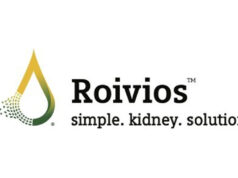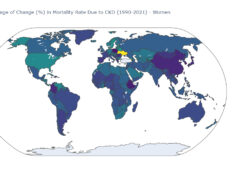
Acute kidney injury (AKI) is considered by many to cause accelerated loss of kidney function—but, according to the authors of new research published in the Annals of Internal Medicine, changes in research focus, practice patterns, and public health targets that have taken place in line with this view may have been based on studies with several methodological limitations. Led by Anthony N Muiru and Chi-Yuan Hsu (University of California San Francisco, San Francisco, USA), a press release details that the team’s multicentre prospective cohort study indicates at most only a small worsening of chronic kidney disease (CKD) in patients with the condition who suffer from AKI.
Setting out what they identify as issues with previous studies, Muiru and colleagues explain that they hypothesised the previously observed association between AKI episodes and quicker loss of kidney function would be considerably attenuated if pre-AKI estimated glomerular filtration rate (eGFR), proteinuria, and eGFR slope are controlled for, as both low eGFR and high proteinuria are strong risk factors for both AKI and CKD.
“A more refined understanding of the independent association of AKI and change in kidney function trajectory may lead to better-tailored clinical guidelines for post-AKI care,” say the authors.
To contribute to better understanding, Muiru et al designed a study which included 3,150 patients with CKD across multiple centres. Of these, 44% were female, 43% non-Hispanic Black, 54% had diabetes, and 11% had a history of heart failure. The mean age at baseline was 65 with a standard deviation (SD) of nine, while the mean eGFR was 52 ml/min/1.73m2.
The median follow-up period was 3.9 years, and in this time 433 participants experienced episodes of AKI, 92% of which were of stage 1 or 2 (mild to moderate) severity. Episodes of AKI were associated with an absolute change of -2.30ml/min/1.73m2 (95% confidence interval [CI], -3.70 to 0.86) in eGFR. However, the decrease in eGFR after AKI was attenuated following adjustment for time-updated diabetes, heart failure, systolic blood pressure and other factors.
“Additional adjustment for urine protein-creatinine ratio (uPCR) and baseline eGFR,” the authors noted, “further attenuated the association such that the CI bounds included the possibility of no effect.” Specifically, in fully adjusted models, episodes of AKI were associated with an absolute eGFR change of only -0.38ml/min/1.73m2 (95% CI -1.35, 0.59) and changes in eGFR slope of 0.04 ml/min/1.73m2/year (95% CI -0.30, 0.38). Similar results were seen if cystatin C (and not creatinine) were used instead to estimate GFR.
In their discussion, the authors argue that rigorously controlling for differences in patient characteristics showed that “AKI did not predict worsening of subsequent kidney function trajectory”. They suggest that much of the kidney disease observed post-AKI may already be present prior to AKI.
The strengths of their study, Muiru and colleagues state, include that they accounted for each individual patient’s pre-AKI eGFR slope and pre-AKI level of proteinuria which were “rigorously tracked” via a prospective research study protocol. This may explain why their conclusion stands in contrast to the findings of other previous studies.
Muiru and colleagues point to some limitations of their own study, among them a lack of information on what specifically led to AKI in enrolled patients. However, they maintain that their work “more rigorously addressed methodological limitations” of previous work to demonstrate that the link between mild-to-moderate AKI and CKD progression is minor. This result, they say, challenges the current paradigm.










